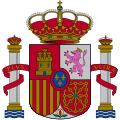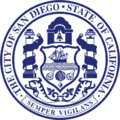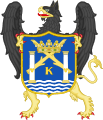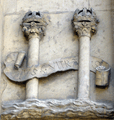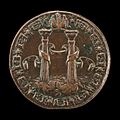Pillars of Hercules facts for kids
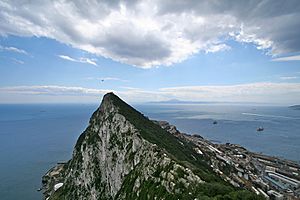
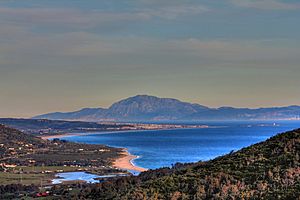
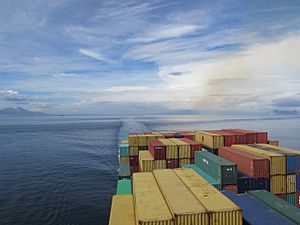
The Pillars of Hercules are two famous mountains that stand at the entrance to the Strait of Gibraltar. This strait connects the Atlantic Ocean to the Mediterranean Sea. In ancient times, people called these mountains the "Pillars of Hercules."
The northern Pillar is the Rock of Gibraltar. It's a well-known landmark. For the southern Pillar, people aren't so sure. The two main ideas for the southern Pillar are Monte Hacho in Ceuta and Jebel Musa in Morocco.
Contents
The Story of Hercules and the Pillars
According to ancient Greek mythology, the hero Hercules had to complete twelve very difficult tasks. One of these tasks was to bring back cattle from a far-off land in the West. This journey took him to the very edge of the known world.
Ancient writers like Pindar and Strabo mentioned these "Pillars" as the farthest point Hercules reached. Some people even thought the true Pillars were actually two bronze columns in a temple near Cádiz, a city in Spain. These columns were dedicated to a god named Melqart, whom the Greeks linked to Hercules.
Hercules Creates the Strait
Some Roman stories say that Hercules created the Strait of Gibraltar himself! On his way to find a special garden, Hercules faced a huge mountain. Instead of climbing it, he used his amazing strength to smash right through it. This act connected the Atlantic Ocean and the Mediterranean Sea.
One part of the split mountain became Gibraltar. The other part became either Monte Hacho or Jebel Musa. These two mountains together were then called the Pillars of Hercules.
However, another ancient writer, Diodorus Siculus, had a different idea. He believed that the strait already existed. Hercules simply made it narrower to stop sea monsters from swimming into the Mediterranean Sea.
In some other stories, Hercules built the Pillars to hold the sky up. This freed the giant Atlas from his job of holding the sky.
The Pillars and Ancient Explorers
The Phoenicians were ancient sailors and traders. They were among the first to sail past the Pillars of Hercules into the Atlantic Ocean. They built many trading posts along the coast of modern-day Morocco. These posts included places like Lixus, Chellah, and Mogador (now Essaouira).
Near Cádiz, there was a temple to the god Melqart. This temple had two tall bronze pillars. Many people believed these were the real Pillars of Hercules. However, the writer Strabo thought this was just a story. He said the pillars only talked about how much money the Phoenicians spent to build them, not about Hercules.
The Pillars in Later Times
The Pillars of Hercules became a symbol of the edge of the world. People in the Renaissance (a period of great change in Europe) believed the Pillars had a warning: Ne plus ultra. This Latin phrase means "nothing further beyond." It was a warning to sailors not to go any further.
A New Meaning for the Pillars
After Christopher Columbus discovered the Americas, the world changed. The Pillars were no longer the end of the world. Spain, which explored much of the "New World," changed the motto. It became Plus Ultra, meaning "further beyond." This new motto showed that there was much more to explore.
Today, the Pillars appear on the coat of arms of Spain. This symbol shows that the Pillars are a gateway to new discoveries.
Pillars in Art and Buildings
The Pillars of Hercules have inspired many artists and builders.
- In Spain, near the town of Los Barrios, there are two tall buildings called the Torres de Hercules. These twin towers were designed to look like the famous Pillars.
- In Mexico, at the National Autonomous University of Mexico's Central Library, there is a large mural. This mural shows the Pillars of Hercules. It reminds people of Mexico's history with Spain and King Charles V.
Pillars on Flags and Seals
The Pillars of Hercules are also seen on many coats of arms and seals, especially in places connected to Spain's history.
-
The columns as shown in the Spanish coat of arms.
-
Seal of San Diego, California.
-
Coat of arms of Trujillo, Peru.
-
Coat of arms of Potosí, Bolivia.
-
Coat of arms of Cádiz.
Images for kids
See also
 In Spanish: Columnas de Hércules para niños
In Spanish: Columnas de Hércules para niños



